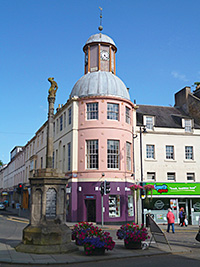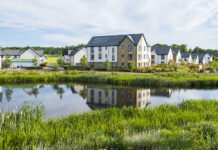Lottery win will transform historic town centres

THE economic fortunes of three Scottish centres are to be transformed after funding was confirmed for their historic streets and buildings.
The Heritage Lottery Fund earmarked the cash for the Viking settlement of Kirkwall in Orkney and the county town of Cupar in Fife as part of its Townscape Heritage Initiative (THI). It also announced a grant of £1.7m to continue the revitalisation of the Parkhead Cross area of Glasgow in the run-up to the Commonwealth Games.
With an investment of over £40m, the THI has helped breathe life back into 37 communities in Scotland, from seaside resorts to market towns.
And it has proved so successful that an additional programme, called Heritage Enterprise, has been designed to unlock the commercial potential of redundant heritage buildings and sites.
With a budget of at least £25m a year over five years, Heritage Enterprise will plug the funding gap where the development of an historic site or building is not commercially viable. With grants of between £100,000 and £5m, it will enable not-for-profit organisations to work with the private sector to bring assets back into viable economic use.
Colin McLean, head of the Heritage Lottery Fund in Scotland, said: “The regeneration of town centres is an obvious way in which we as an organisation can make an important contribution to improving the economy of an area and the standard of living for the people resident there.
“Investing lottery money to revitalise historic buildings at the heart of a community not only makes a place more attractive to live, visit and invest in, it also provides jobs and training opportunities for local people.”
Kirkwall THI, Orkney
Founded around 1035, the Viking town and Royal Burgh of Kirkwall is the capital and administrative centre of the Orkney Islands.
The THI project aims to reinvigorate the town’s Viking identity by bringing vacant historic properties back into use as well as improving shop fronts in the town centre. It follows the success of the current THI project in Stromness which won a special mention in the recent Scottish Empty Homes Awards.
Cupar THI, Fife
Cupar was a wealthy trading centre and county town over the 18th and 19th centuries although its roots date back to mediaeval times.
The THI, to be managed in partnership with Fife Historic Buildings Trust, is to help reinstate Cupar as a vibrant market town. The town is characterised by many long, narrow pends, and stone buildings built from a particularly soft local sandstone.
Parkhead Cross (Phase 2), Glasgow
Building on the success and confidence of its first THI scheme, a second phase of works will continue the regeneration of Parkhead Cross.
The busy junction, with five roads converging, was once the centre of a thriving and prosperous community which grew thanks to the wealth created from steel production.
However, with tenement clearances and increasing unemployment, 75% of the population moved away between 1951 and 1981, leaving Parkhead one of the most deprived areas of Scotland.
The first THI scheme, which completed in December 2011, successfully restored and brought back into use three key listed buildings as well as improving 25 shop fronts around the cross.
Image – Cupar is one of the towns to benefit.











